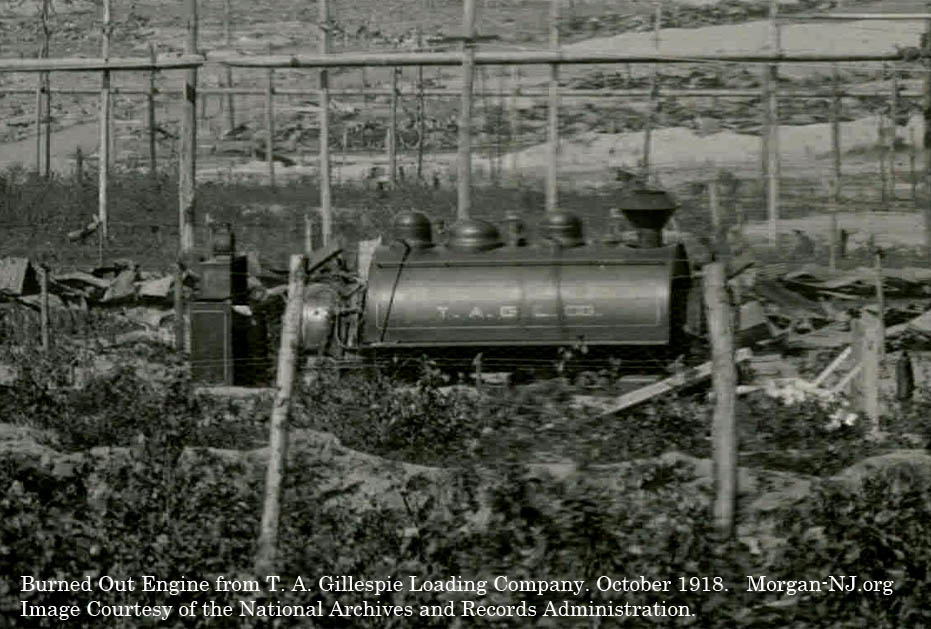Morgan Memories – Burned Out T. A. Gillespie Loading Company Locomotive
 In much like a “Where’s Waldo” image, buried deep in plain sight in large panoramic image of the aftermath of the destruction of the great T. A. Gillespie Loading Company (also known as “The Morgan Plant”) in October 1918 is the remains of a railroad tank locomotive. As unbelievable as it sounds, in the area surrounding present day Eisenhower School in Sayreville, NJ, was nearly 45 miles of railroad tracks whose sole purpose was to facilitate the loading of artillery shells in support of the United States and its allies in the Great War (later designated as World War I). A tank engine would have been the perfect engine for the limited railroad contained within the plant. With no separate tender to hold coal and water, it was the ideal locomotive type for moving freight cars around.
In much like a “Where’s Waldo” image, buried deep in plain sight in large panoramic image of the aftermath of the destruction of the great T. A. Gillespie Loading Company (also known as “The Morgan Plant”) in October 1918 is the remains of a railroad tank locomotive. As unbelievable as it sounds, in the area surrounding present day Eisenhower School in Sayreville, NJ, was nearly 45 miles of railroad tracks whose sole purpose was to facilitate the loading of artillery shells in support of the United States and its allies in the Great War (later designated as World War I). A tank engine would have been the perfect engine for the limited railroad contained within the plant. With no separate tender to hold coal and water, it was the ideal locomotive type for moving freight cars around.
Hopefully someone like my school friend Ken will be able to identify the make and model of this engine. When they do, I’ll update this page.
Looks like it could be an HK Porter. Here’s a link to one that served at the Anaconda Copper Works in Perth Amboy. http://www.njmt.org/index.htm?page=number_9
Thanks, John! They do look very similar. There are some differences in the smoke stack and domes. Wonder if there is any way to get additional info about this specific company and its locomotives? Does the smokestack get wider at the top because there is a spark arrestor there? This would make sense since the locomotive was operating at a munitions plant where there literally were tons of explosives near by. Old steam locomotives from the American West had these types of smoke stacks I believe because they burned wood vs. coal.
You are correct about the spark arrestor. I’ll do some research and see what I can find out about HK Porter. Thanks for a wonderful blog. I especially liked the info on the Werner plant!
wish I had a vid camera in action when an ol timer took us on a present day tour of the site in 1986 or so as he recollected his memorizes of the explosion, pointed out the buildings still standing in present time and the entrances of the pllant off rt 9 north and how the areas were evac for days and they walked to Carteret from SA to escape the carnage